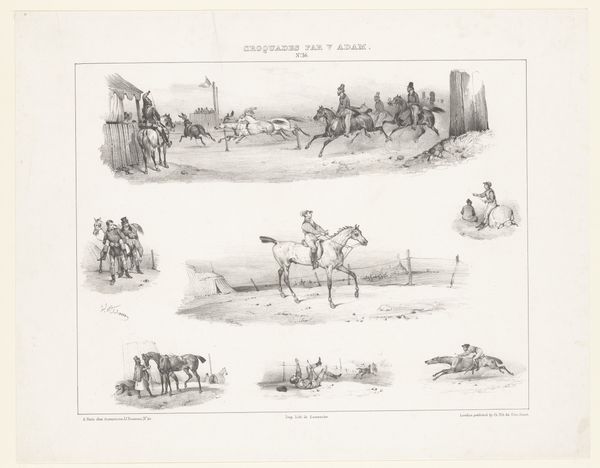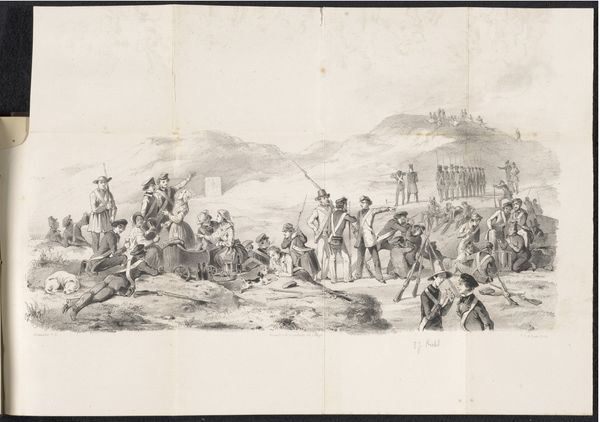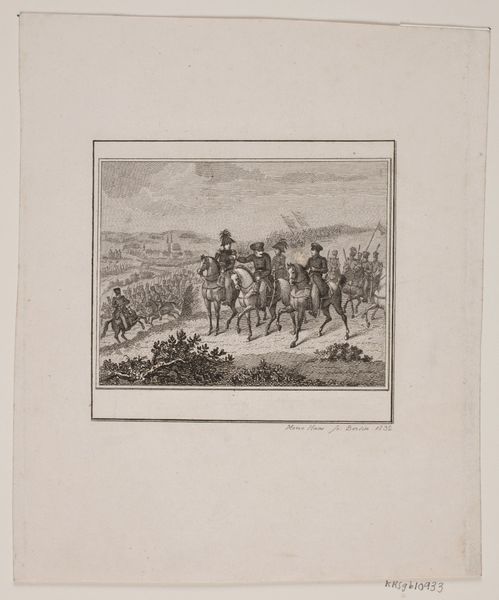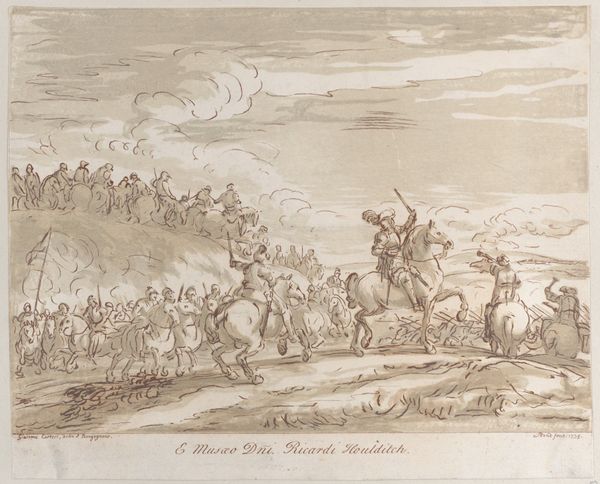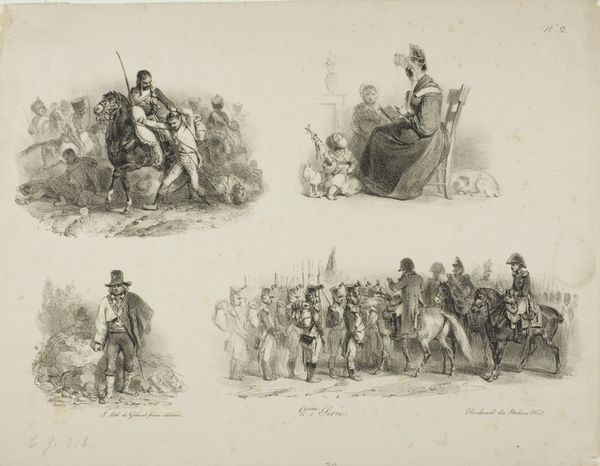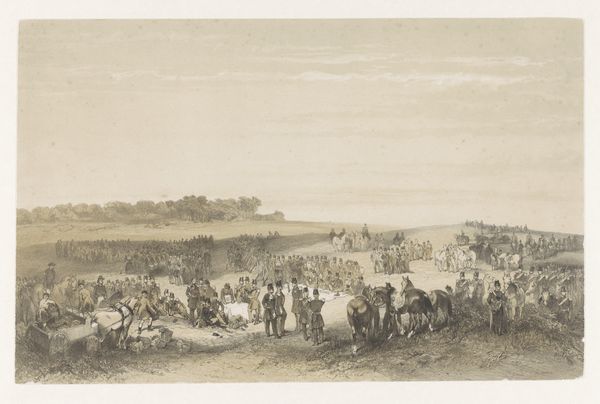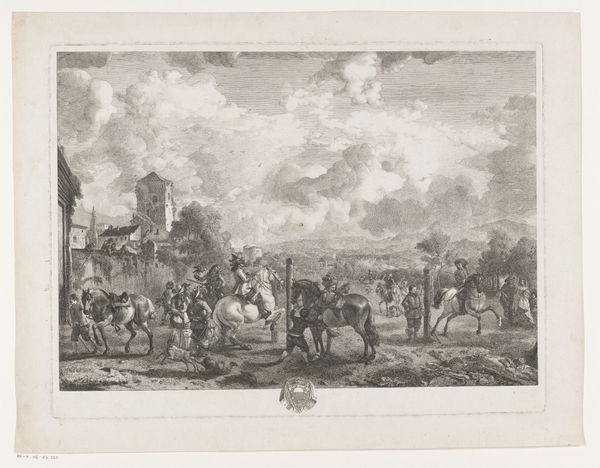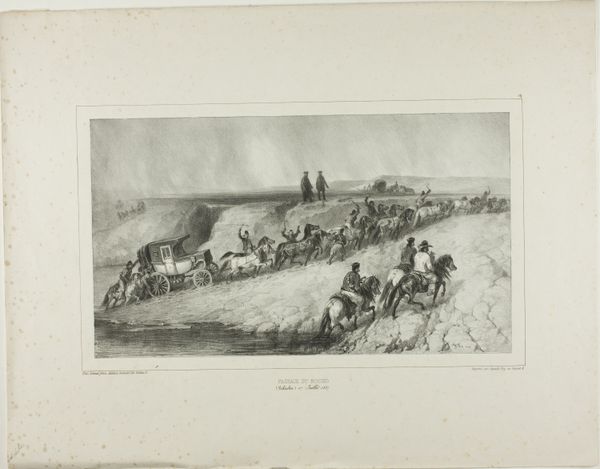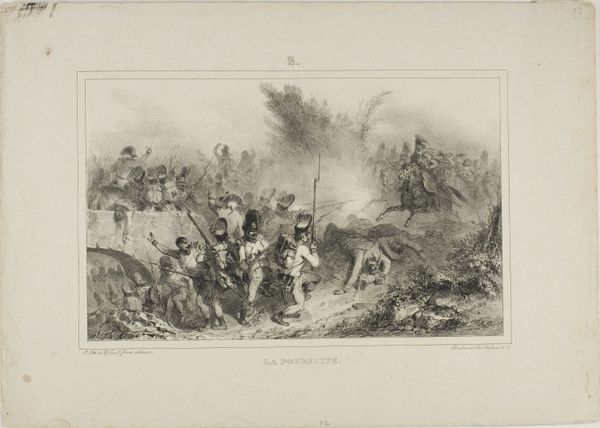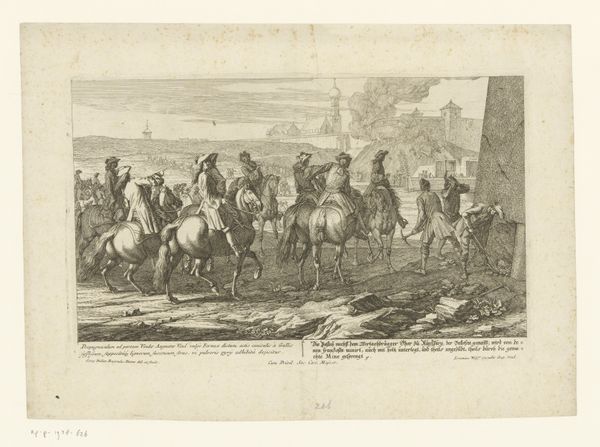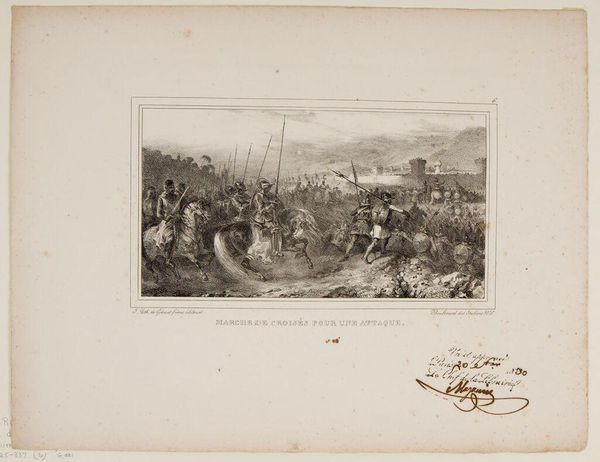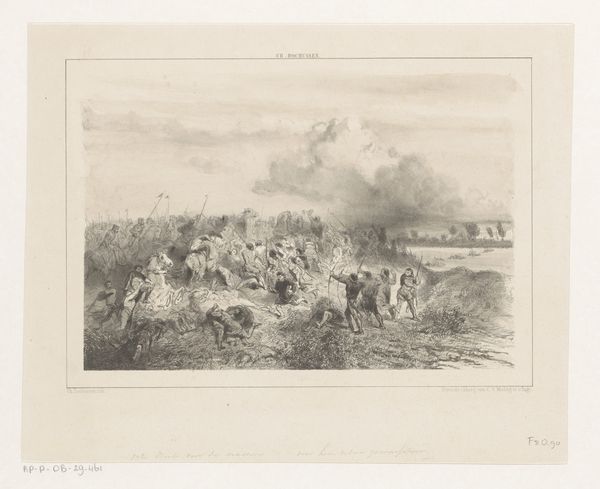
drawing, lithograph, print, paper
#
drawing
#
lithograph
# print
#
paper
#
romanticism
#
genre-painting
Dimensions: 193 × 295 mm (image); 277 × 369 mm (sheet)
Copyright: Public Domain
Curator: What a dynamic compilation of scenes we have here in "Sheet of Sketches," a lithograph print on paper created in 1829 by Auguste Raffet. Editor: It's arresting, this aggregation! My initial reaction is to the play of light and shadow; note how effectively the artist uses line work to evoke mood and atmosphere, from the quieter moments to the intense battle scene. Curator: Raffet was deeply influenced by the political climate of his time. This "Sheet of Sketches" provides insights into the shifting power dynamics post-Napoleonic Europe, doesn’t it? Through depictions of soldiery and intimate settings, we see society adjusting, renegotiating power structures within genre-scene imagery. Editor: Absolutely. He masters visual texture, but the way Raffet deploys diagonal lines particularly in the battlefield segment? It communicates instability, chaos, and immediate urgency to viewers through dynamic forms alone, wouldn’t you say? Curator: Those Romantic era notions come across powerfully. The soldier rendered almost sentimentally, juxtaposed against skirmishes, speaks to the romanticization of conflict, but it also reveals deep vulnerability during rapid societal change, don't you think? The image of conflict reflects how class and masculine identities are enacted, challenged and maintained in a society grappling with industrial and political change. Editor: Right—while the subject matter conveys sociopolitical ideas, formally it is exquisite draftsmanship at play! How he utilizes varying densities of line to sculpt each figure, generating robust forms using only hatching and cross-hatching; it is marvelous work, truly. Curator: The seemingly disparate groupings further reveal an exploration of personal versus collective identity through contrast, really highlighting individual agency or a sense of powerless at times. The romantic individual against a volatile and changing backdrop. Editor: I see that. Ultimately, analyzing it in this way gives even more depth to the materiality through narrative elements—it allows for a complex dialogue on Romanticism and formal construction to become enriched by it. Curator: Indeed. It leaves us contemplating intersections of power, personhood, and visual storytelling so particular to the 19th century. Editor: A compelling reminder to consider multiple modes for analysis as enriching rather than divergent practices.
Comments
No comments
Be the first to comment and join the conversation on the ultimate creative platform.
